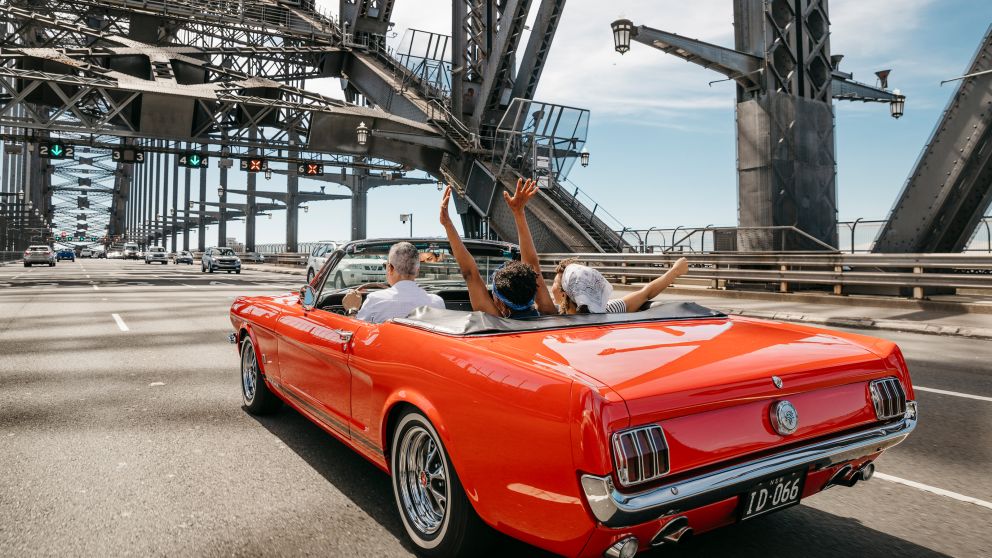
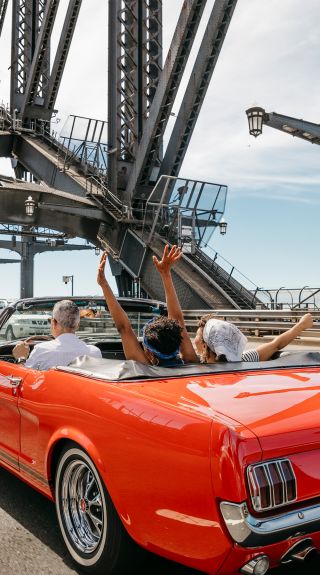
Getting around Sydney
Scenic drive across Sydney Harbour Bridge, Sydney



An efficient network of transport options connects the attractions and suburbs of Sydney and regional NSW, including buses, trains, ferries and light rail.
Transport for NSW provides a variety of ways to get around the city, as well as information for motorists. Use the trip planner at transportnsw.info to plan your travel.
The Opal card is an easy, convenient way of paying for your travel on public transport in Sydney. It can be used on all public transport, including trains, ferries, buses and light rail. There are daily and weekly caps on the Opal network, meaning you can travel as much as you like within the Opal network and you never pay more than the capped fare. The Sydney Airport station access fee isn’t included in the travel caps.
Opal cards can be obtained from train stations and the domestic and international airport, as well as many retailers across the city. For more information, visit opal.com.au.
You can also pay with contactless-enabled American Express, Mastercard or Visa credit or debit cards or a linked device, by tapping on and tapping off at Opal readers. Contactless payments are available on all public transport in the Opal network and you will receive the same travel benefits of an Adult Opal card.
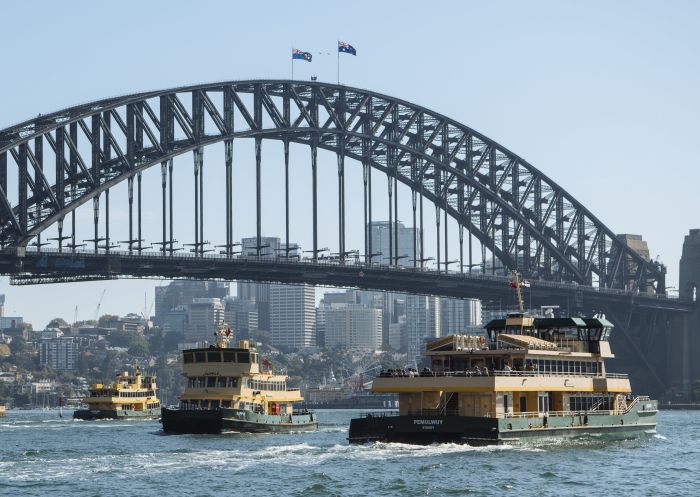
Ferries on Sydney Harbour
Buses form a key part of Sydney’s public transport system, connecting all areas of the city, including those without rail or water transport. There are also NightRide services replacing most train routes between midnight and 4:30am.
Key bus routes include:
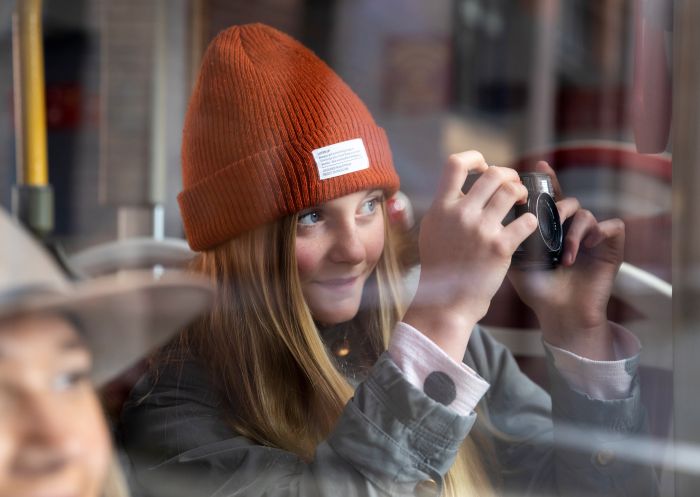
Family enjoying a guided tour of Sydney with Big Red Bus Tours, Sydney
Sydney's main terminus for local and regional trains and buses is Central Station at Railway Square, close to Chinatown. Trains operate North to the CBD and across the harbour to North Sydney and beyond, as well as east to Bondi Junction and South past and including Sydney Airport. Sydney train maps and train timetables can be found at Transport NSW.
The L1 Inner West Light Rail network operates in both directions between Central Station and Dulwich Hill in Sydney’s West. The CBD and South East Light Rail includes the L2 Randwick Line connecting Circular Quay to Randwick and the L3 Kingsford Line between Circular Quay and Junior Kingsford. Visit Transport NSW for more information and for a Sydney Light Rail map.
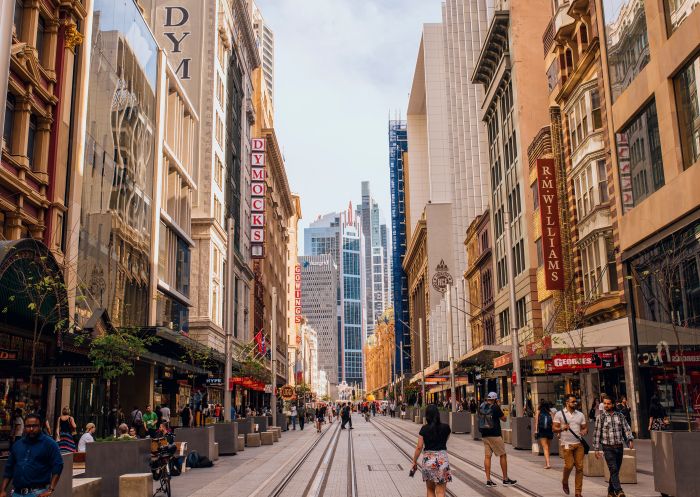
Tramlines running down George Street, Sydney CBD
Ferries provide a fast and convenient way to cross the harbour, as well as offering a fantastic vantage point of the city. From Circular Quay you can take the Manly Fast Ferry or F1 to Manly, the F2 to Taronga Zoo and the F4 to Watsons Bay and Rose Bay.
Captain Cook also operates ferries between various locations including between Watsons Bay and Manly, Circular Quay and Clifton Gardens and from Circular Quay to Shark Island.
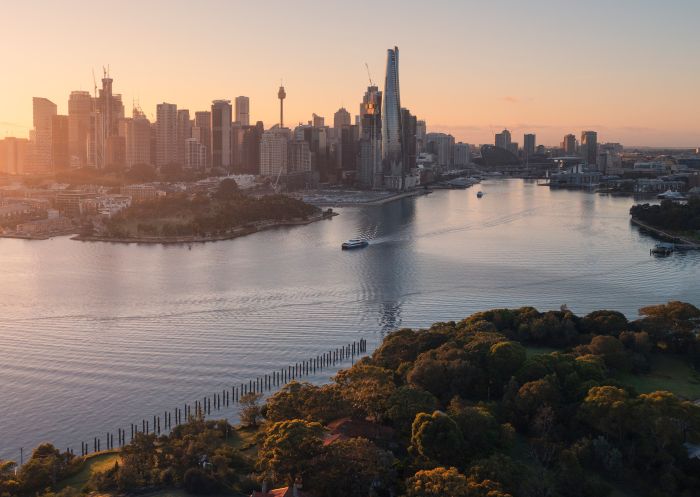
View at sunrise of Goat Island, Sydney Harbour
The river ferry travels up the Parramatta River from Circular Quay to Parramatta, with stops along the way including Cockatoo Island, Cabarita and Sydney Olympic Park. The full journey takes about 90 minutes depending on stops.
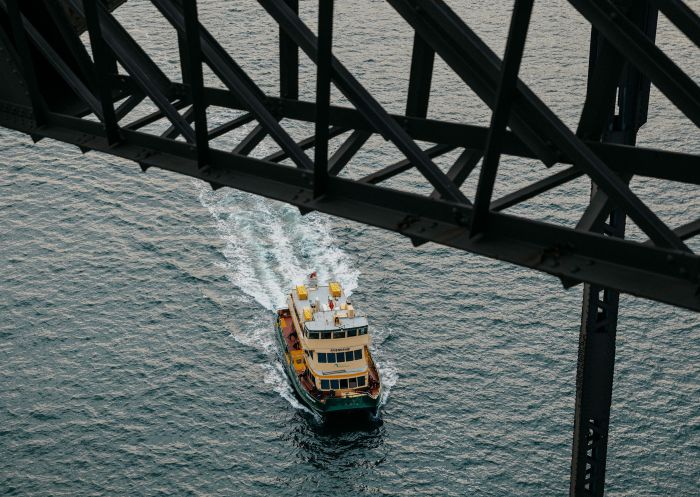
Friendship Ferry cruising under Sydney Harbour Bridge, Sydney Harbour
A bicycle is a great way to get around Sydney. Cyclists use kerbside bike lanes and are permitted on most of Sydney's multi-lane roads. Find Sydney cycle maps, routes and more information.
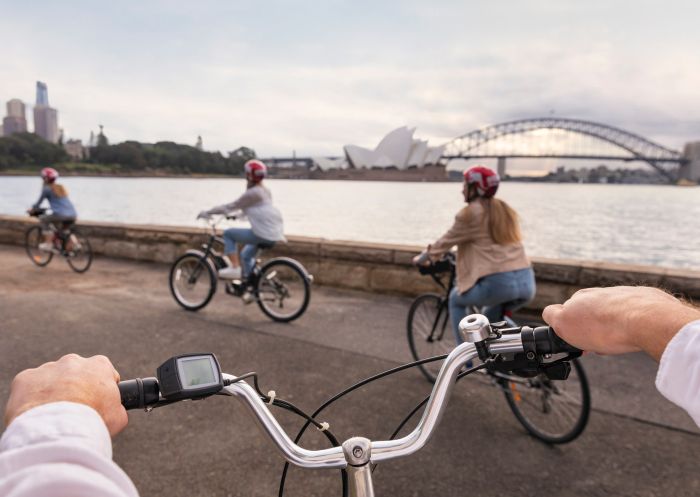
Bonza Bike Tours, Royal Botanic Garden
Australians drive on the left-hand side of the road. If you’re travelling from overseas, you are able to drive in Australia with your foreign driver's licence for three months, as long as that licence is in English. If your licence is not in English, you will need to attain an International Drivers Permit (IDP) to use in Australia.
Seat belts are compulsory in Australia, with the driver responsible for ensuring all passengers are wearing them. Using hand-held mobile phones is prohibited. The blood alcohol limit is 0.05% throughout Australia and is enforced with random breath tests. Pay attention to speed limits – speed cameras are used across Sydney and NSW.
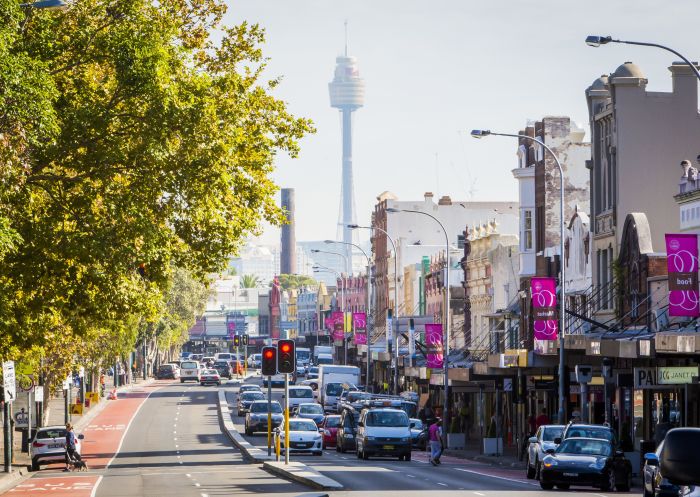
Shops and cafes lined up along Oxford Street, Paddington
Parking can be limited and expensive in the CBD and close to popular beaches. Many of Sydney’s streets are restricted to permit holders, with time limits applied to non-permit holders or with metered parking. Fees range from $2.50 to $8 per hour depending on the location and time of day.
The cheapest way to park in the city centre is to pre-book online. Secure and Wilson parking offer cheaper advance rates and parkopedia.com is also a useful resource when looking for parking. If parking on the street, ensure you park in line with traffic.
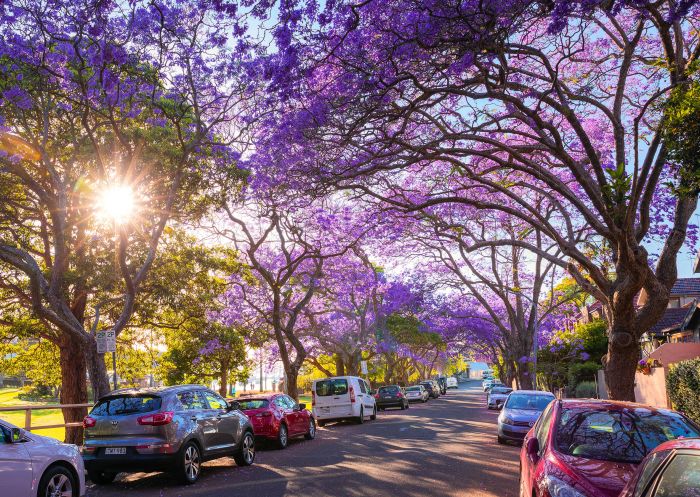
Jacaranda trees in full bloom along McDougall Street, Kirribilli
Sydney has a number of toll roads and tunnels, including the Harbour Bridge, Harbour Tunnel, Cross City Tunnel and Eastern Distributor. This is charged via an electronic system. If you have a rental car, it will most likely have an e-tag installed and you will be billed at a later date. If you don’t have an e-tag, you can obtain one from the following websites:
If you pass through a toll road without a tag, ensure you call the number advertised to pay the toll, otherwise, you may incur a fine.
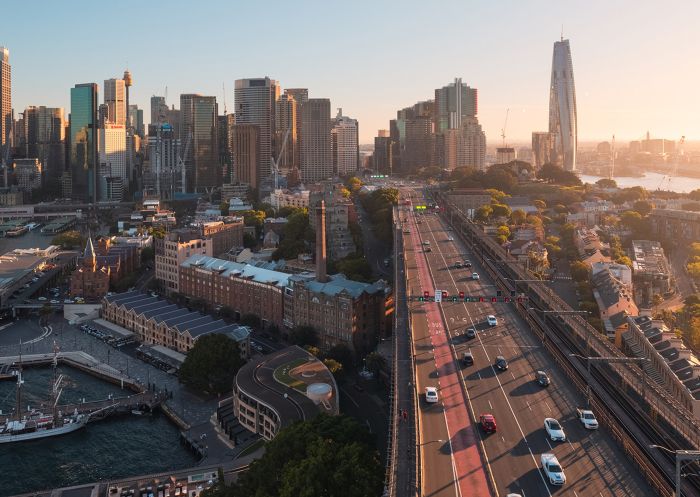
The Cahill Expressway, Sydney CBD
You’ll find a range of car rental options in Sydney, including car, 4WD, campervan and classic car hire.
Electric vehicle charging points can be found across Sydney and NSW. Make sure you check their locations before setting out on your journey. You can find a full list on the Electric Vehicle Council website.
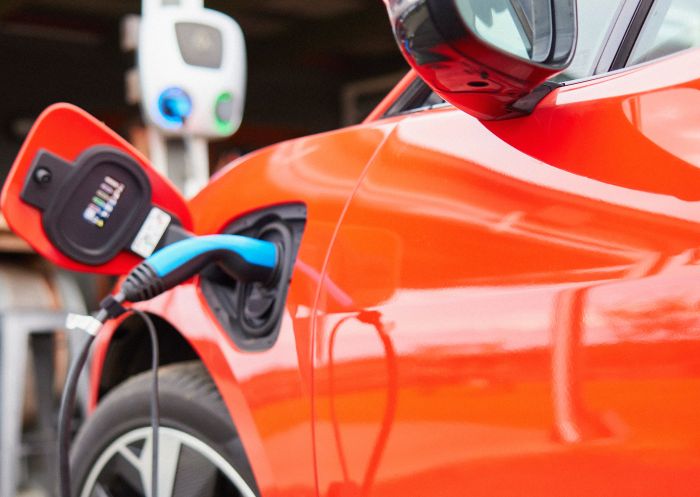
Electric car charger at Mountain Ridge Wines, Coolangatta
Taxis and water taxis are a convenient way to get around Sydney. Rideshare services also operate in Sydney and include Uber, Ola and Didi.
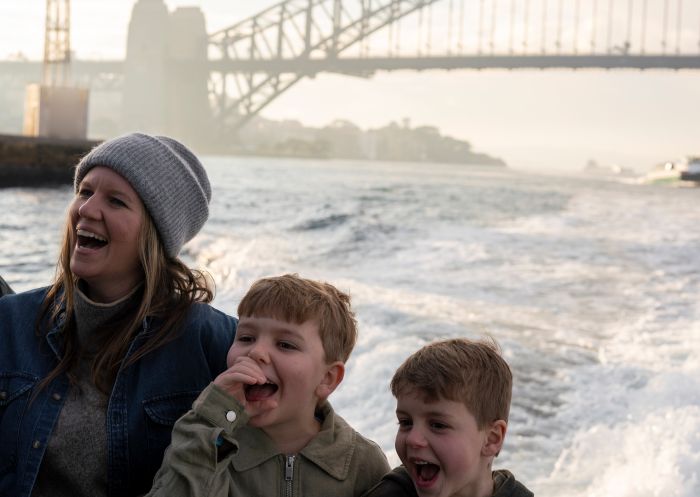
Family enjoying the views aboard a Majestic Water Taxi, Sydney Harbour
Sydney Airport is located about 9 kilometres south of Sydney's city centre in the suburb of Mascot.
The three passenger terminals at Sydney Airport are:
Transport services such as buses, taxis, car hire, rail and shuttle bus services are conveniently located at Sydney Airport.
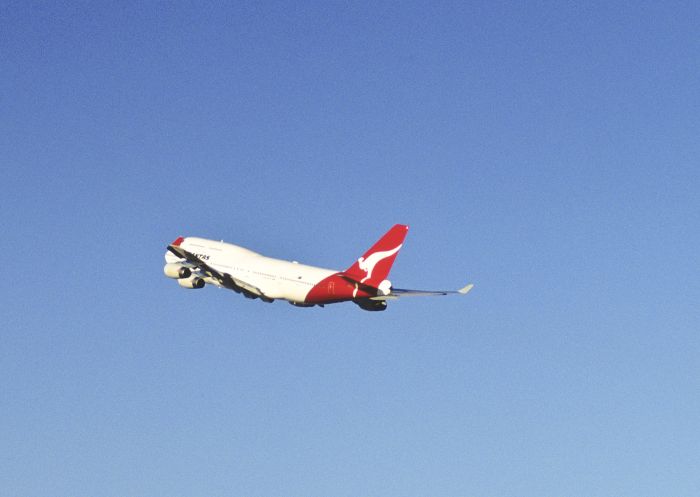
Qantas plane taking off from the airport, Sydney Airport
There are two cruise ship terminals in Sydney Harbour. The main Overseas Passenger Terminal is on Circular Quay’s western side in the historic Rocks and opposite the Sydney Opera House. The White Bay Cruise Terminal is near Anzac Bridge and is best accessed from James Craig Road in Rozelle.
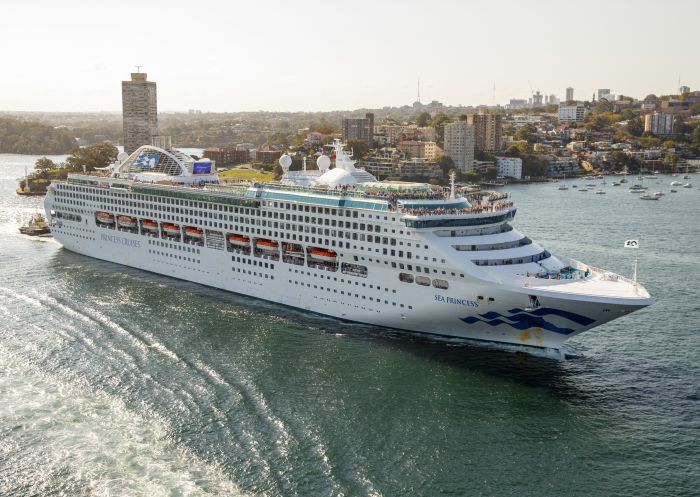
The Sea Princess cruise, Sydney Harbour
Trains depart Central Station for many NSW destinations, including the South Coast, Blue Mountains, Southern Highlands, Central Coast, North Coast, Country NSW and Outback NSW. Travelling long distances is easy and affordable on regional train and coach services.
Private bus companies run daily services along the coast and to regional NSW, as well as to other states from Sydney CBD and Central Station.
All ferries, trains and new buses in NSW are wheelchair accessible, providing easy access for prams and other mobility devices. You can ask for assistance boarding or leaving transport. Visit Transport for NSW’s accessible travel web page for more information.
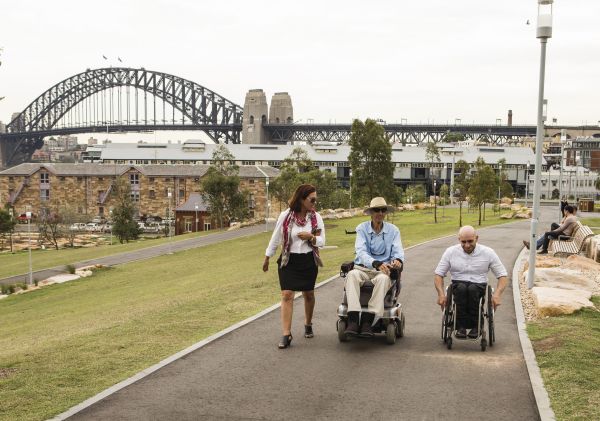
Opal cards are essentially smartcard tickets used to pay for travel on public transport in Sydney. To use the Opal card, you must first load value onto it. Then at the start of your journey, you tap on at a designated Opal card reader. When you arrive at your destination, you tap off, in the same way that you tapped on, and the designated Opal card reader will display your fare. The fare is calculated according to the distance you have travelled and it is automatically deducted from the value on your Opal card account (or charged to your contactless payment card). Opal cards are reusable and must be reloaded once your account reaches low figures to continue using public transport in the Opal system network.
There is no charge for an Opal card. However, when obtaining an Adult Opal card, the minimum value of $20 must be loaded onto the card. This amount is then used to pay future fares on the Opal network. The minimum value for a Child/Youth Opal card is $10 and this amount can also be used in the same way as an Adult Opal Card, to pay for future fares on the Opal network.
Opal cards can be purchased over the counter from Opal retailers, this includes convenience stores, grocery stores, newsagents and pharmacies. Look for the Opal symbol at shops in your area to locate an Opal card retailer.
There are many ways to top up your Opal card. The most convenient way is by logging into your account or through the Opal Travel app, registering your Opal card to your account, adding a debit or credit card and setting up an automatic top up. When your Opal card balance reaches a certain minimum value, it will automatically add a set amount by charging your card. If you prefer to do manual top ups, this can also be done through the Opal Travel app or by logging onto your account. Additionally, you can top up your Opal card over the counter at Opal retailers or the Opal top up machines available at selected stations, stops and wharves.
Yes, you can use your credit card to tap on and off the Opal network system as an alternative to travelling with an Adult Opal card. American Express, Mastercard and Visa debit cards with the contactless payment symbol are also other accepted forms of contactless payments. Using any of these payment methods, you will be charged the same Adult Opal fare as you would be charged using your Opal card.
If you have more than one payment method on your mobile device, ensure you use the same card to tap on and off the Opal system to avoid being charged the maximum default fare.
Opal cards do not come in a digital form, but you can use your iPhone (or other smart device) to tap on and off the Opal system network and pay for the fare from your digital wallets using contactless payments. Select the card you want to charge the fare to in your digital wallet and tap onto the designated Opal card reader. The Opal reader will show a “tap success” message to signify that payment has been accepted. At the end of your journey, hold the same device you tapped on with over the Opal reader until you see the confirmation that payment has been accepted.
Yes, there are Child/Youth Opal cards that are available for children aged 4-15 years of age. Child/Youth Opal cards can also be used by full time NSW and ACT students, aged 16 and older, with a current NSW secondary student concession card. Child/Youth Opal cards can be purchased from Opal retailers or can be applied for online. The Child/Youth Opal cards provides children with discounted fares on the Opal system network. Children under the age of three travel for free on the Opal network. Contactless fares are charged at the equivalent of an Adult Opal ticket, even if used by a child or youth.
If you forget to tap on at the beginning of your journey, but tap off at the end of your trip, you will be charged the default fare for an incomplete trip. Similarly, if you tap on, but do not tap off at the end of your journey, you will also be charged the default fare amount.
The amount of a default fare varies depending on the transportation taken:
The default bus fare is $4.71.
The default fare on the ferry is $7.51.
The default fare using the light rail is $3.66.
The default fare for trains is $8.69.
Only one Opal card can be used on one trip at a time. You must not tap on twice with the same Opal card to pay for another person’s trip. Technically, you can share an Opal card as long as you are not riding on the same trip. Two individual cards are needed if you plan to travel at the same time.
If your registered Opal card has been lost, stolen or damaged, you can transfer the balance to another Opal card that is also registered to you. However, if you do not obtain a new Opal card and register it to your account, you will only be able to block the original lost, stolen or damaged Opal card.
Once you have your new Opal card, you can request the balance from the lost, stolen or damaged Opal card to be transferred to your new card. Call 13 67 25 to request the balance from the original card to be transferred to your new card.
Yes, there are a number of benefits when you travel in the Opal network with an Opal card or credit or debit card.
Daily travel caps - travel all day in the Opal network and never pay more than $16.80 a day for Adult, $8.40 a day for Child/Youth and Concession and $2.50 a day for Gold Senior/Pensioner.
Weekly travel caps - travel all week in the Opal network and never pay more than $50 a week for Adult, $25 a week for Child/Youth and Concession and $17.50 a week for Gold Senior/Pensioner
Weekend travel cap - travel all day on Saturday, Sunday and public holidays and never pay more than $8.40 a day for Adult, $4.20 a day for Child/Youth or Concession and $2.50 a day for Gold Senior/Pensioner
Weekly Travel Rewards - if you have paid for eight journeys in one week (Monday to Sunday), your fares will be half price for the rest of the week.
30% discount with off-peak metro/train/bus/light rail fares - when you travel outside of peak times with your Opal card.
Opal Transfer Discount - when travelling with more than one mode of transport on the same journey (train, ferry, bus or light rail), a $2 discount (adults) is applied to each transfer, within 60 minutes from the last tap off.
Receive up to the minute news of road incidents and conditions that may affect your journey in Sydney and the NSW regions.
Download the Live Traffic NSW App from the App Store
Download the Live Traffic NSW App from Google Play
TripView displays Sydney train, bus, ferry and light rail timetables, showing your next services. By TripView Pty Ltd.
Download TripView from the App Store
Download TripView from Google Play
Next Station provides trip planning and timetables, real-time vehicle position and service alerts in multiple languages covering Sydney’s public transport network, NSW TrainLink and NSW regional buses.
Download Next Station from the App Store
Stay connected to Sydney for all the latest news, stories, upcoming events and travel inspiration.
All the insider news, tips and inspiration you need to plan your next trip, delivered straight to your inbox.
Sign UpSydney.com is the official tourism site for Destination NSW.
© Copyright 2024 Destination NSW. All rights reserved